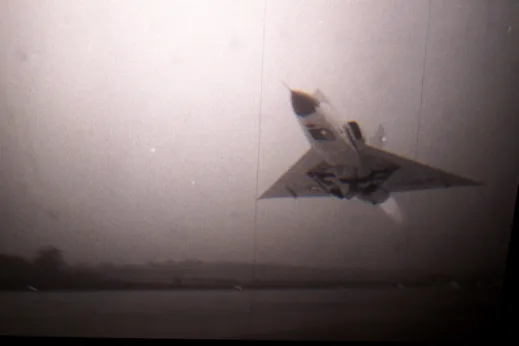The Day Nobody Flew
September 11, 2001 wasn’t the first time U.S. air traffic was grounded.
/https://tf-cmsv2-smithsonianmag-media.s3.amazonaws.com/filer/LAXPanAm-388-sept06.jpg)
In the horror and confusion that followed the attacks on the World Trade Center and Pentagon five years ago, misinformation abounded. Among the many errors and rumors relayed by the press at the time was one that still persists today—that the cancellation of all civilian aviation flights on September 11, 2001 was the first such mass grounding in U.S. history.
It wasn’t. It wasn’t even the second. The first groundings occurred almost exactly 41 years earlier, on September 10, 1960, as part of Operation Skyshield, a NORAD-run test of continental defenses against Soviet attack. All U.S. flights were canceled again under Skyshield II, on October 14-15, 1961, and for a third time on September 2, 1962.
Operation Skyshield was the largest aviation exercise ever held, a massive drill involving a quarter million military personnel. On three separate occasions, the air forces of the U.S., Canada, and the United Kingdom flew and defended against simulated air attacks on civilian targets throughout the United States. Friendly aircraft acted as a Soviet strike force, flying 6,000 sorties to "bomb" major cities including New York, Chicago, and Washington. The idea was to see if our air defenses—particularly at the U.S.-Canadian border—were penetrable.
During Skyshield, every commercial airliner and private airplane from the Arctic Circle to the Mexican border remained parked for up to 12 hours—voluntarily. In 1961, the airlines accepted the groundings with grace, even holding open houses in what otherwise would have been empty terminals. At Los Angeles International Airport, Washington National Airport, and New York Idlewild (later renamed JFK) Airport, visitors by the tens of thousands enjoyed tours of the idle airliners, while military aircraft flew supersonic routes over major population centers.
The Federal Aviation Administration had enlisted the help of the U.S. media in alerting the public, pilots and the airlines to the massive coordination required for the groundings. President John F. Kennedy had also solicited the cooperation of the press in keeping the results of Skyshield secret. In an April 1961 speech to the American Newspaper Publishers Association that sounds exactly like statements coming from the White House today, Kennedy warned that "our way of life is under attack" and that the nation was engaged in a "long war against Communism."
The results of Skyshield remained classified until 1997. All military analysis was locked away, purportedly to prevent the Soviet Union from gaining knowledge it could use during an air attack. The secrecy had the added benefit of disguising serious holes in the nation’s air defenses revealed by the exercise. The Early Warning System had been penetrated by enemy cells of up to four aircraft, even though they’d been flying at the system’s optimal altitude for tracking. But exposing such weaknesses was in fact the purpose of the drill. And the price was a relatively short interruption in commercial airplane operations.
As a bonus, Sky Shield III, in September 1962, also included North America’s first—and still only—test to clear the live, national airspace on short notice. Hundreds of Air Force training jets, mimicking airliners, flew on scheduled routes so that traffic controllers could land them under attack conditions. Controllers soon stopped practicing for such an unlikely need, however, and the procedure was long forgotten when a real air attack came in 2001.
A researcher at Air & Space magazine, Roger A. Mola is working on a documentary film, Skyshield: This is Only a Test based on his article published in the February/March 2002 of Air & Space. Mola can be reached at [email protected].



